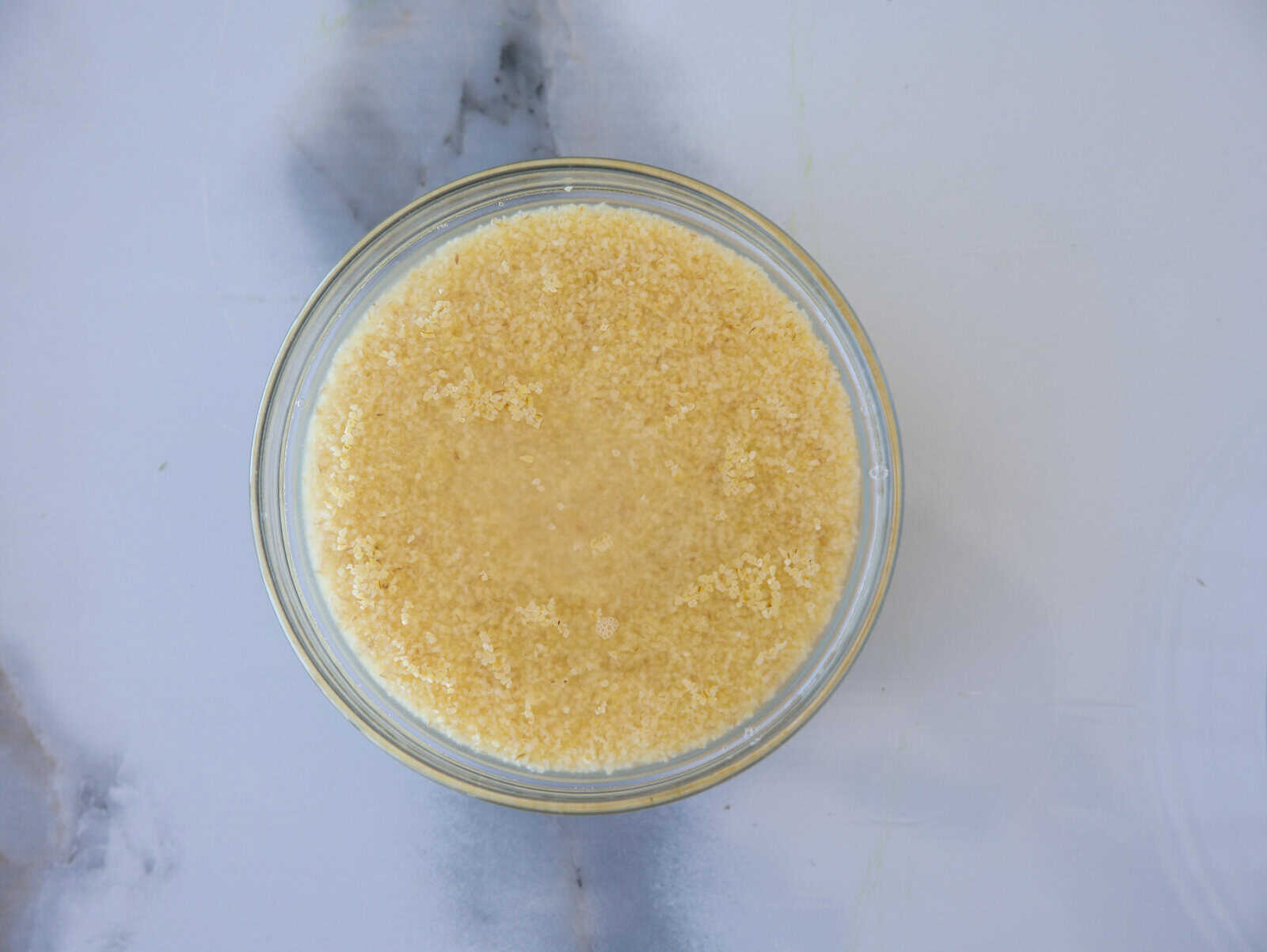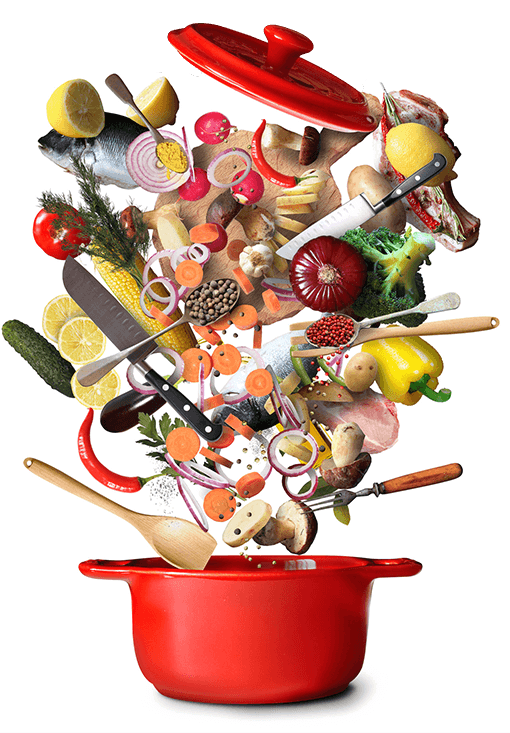Tabbouleh Salad Recipe
When it comes to refreshing and healthy salads, few dishes are as beloved as Lebanese tabbouleh salad. This iconic salad, traditionally made with fresh parsley, mint, tomatoes, and bulgur, is a staple in Lebanese cuisine and a perfect way to enjoy the vibrant flavors of the Mediterranean. Whether you’re looking for a light side dish or a nutritious meal, this authentic Lebanese tabbouleh salad recipe is easy to make and bursting with flavor. Plus, it’s naturally vegan and packed with nutrients, making it a healthy option for any occasion.

What is Tabbouleh?
Tabbouleh is a traditional Lebanese salad and a standout dish in Middle Eastern recipes. Made with finely chopped parsley, fresh tomatoes, mint, and bulgur, all tossed in a simple lemon and olive oil dressing, it’s a refreshing and flavorful salad perfect for any occasion. Tabouli Salad originating from the mountains of Lebanon and Syria, tabbouleh has become a symbol of Lebanese cuisine and is often served as part of a mezze—a spread of small dishes that includes favorites like Fattoush Salad and Baba Ganoush.
Unlike many Western versions that emphasize bulgur, authentic Lebanese tabbouleh is mostly made of fresh herbs, with bulgur taking a secondary role. This not only gives it a vibrant, green color but also boosts its nutritional value, making it a healthy, vegan dish packed with antioxidants and fiber.
🛒 Ingredients

- Fine Bulgur Wheat: This grain adds a chewy texture and nutty flavor to the salad, making it more filling. It absorbs the dressing and helps bind the herbs and vegetables together, creating a wholesome base for the salad.
- Water: Used to soften the bulgur wheat by hydrating it until it becomes tender and ready to mix with the other ingredients.
- Parsley: The star of traditional tabbouleh, parsley brings a fresh, slightly peppery flavor. It adds color, nutrients, and serves as the primary green component of the salad.
- Mint Leaves: Mint provides a refreshing and cooling contrast to the parsley, adding complexity and enhancing the freshness of the salad.
- Tomatoes: Tomatoes add juiciness, sweetness, and acidity, balancing the earthy bulgur and fresh herbs. Their vibrant red color adds visual appeal to the salad.
- Cucumber: Cucumber brings a refreshing crunch and lightness to the salad, making it more hydrating and crisp with each bite.
- Green Onions: Green onions add a mild, sharp flavor that complements the richness of the olive oil and the tanginess of the lemon juice. They provide a gentle onion flavor without overpowering the dish.
For the Dressing:
- Extra Virgin Olive Oil: Olive oil adds richness and smoothness to the salad. It coats the bulgur and herbs, bringing all the flavors together while adding a subtle fruity, grassy taste.
- Lemon Juice: Lemon juice adds brightness and tang, balancing the richness of the olive oil and elevating the fresh flavors of the herbs and vegetables.
- Salt: Salt enhances the natural flavors of all the ingredients, making the salad more savory and well-seasoned.
- Black Pepper: Adds a hint of warmth and a touch of spice, balancing the acidity of the lemon and the richness of the olive oil.
What is Bulgur and How to Cook It?

Bulgur is a whole grain made from cracked wheat kernels that have been parboiled, dried, and then ground into different sizes. It’s a staple in Middle Eastern and Mediterranean cuisine, known for its mild, nutty flavor and versatility in various dishes. Bulgur comes in four types based on the size of the grains: fine, medium, coarse, and extra coarse. Fine bulgur, which we’re using in this tabbouleh recipe, is the smallest grind, perfect for quick soaking without the need for cooking. It absorbs water rapidly, making it a convenient ingredient for salads and other no-cook dishes.
Bulgur is one of my favorite ingredients because it’s not only versatile but also affordable and quick to use. You can incorporate it into many meals, from salads to soups, or as a hearty side dish. One of my favorite recipes that showcases its versatility is my One Pot Chicken and Bulgur, which I highly recommend every home cook try. It’s a simple, nutritious dish that brings out the best in this grain.
🤌 How to Make Tabbouleh Salad
Prepare the Dressing and Serve
In a small bowl or jar, mix together the lemon juice, olive oil, salt, and pepper. Pour the dressing over the salad, toss well, and your tabbouleh is ready to serve. This dressing adds a zesty tang and richness that perfectly complements the fresh ingredients.
Prepare the Bulgur Wheat

To start this easy and authentic tabbouleh recipe, place the fine bulgur in a large bowl and cover it with water. Let it sit for 15-20 minutes until the bulgur has absorbed the water and softened. Drain any excess water if necessary. This no-cook method keeps the process simple and quick.
Chop the Vegetables and Herbs

Mix the Salad Ingredients

Combine the softened bulgur with the chopped vegetables and herbs in a large bowl. Toss everything together to ensure the ingredients are evenly distributed. This step brings out the fresh, vibrant flavors of this Mediterranean salad.
🗒 Variations and Customizations
Gluten-Free Tabbouleh Salad
To make a gluten-free tabbouleh salad, simply swap the bulgur with quinoa or cauliflower rice. Quinoa is a great option as it mimics the texture of bulgur while adding protein. Cauliflower rice offers a low-carb alternative that’s light and fresh.
Add More Vegetables
For a heartier version of this easy tabbouleh recipe, feel free to add more vegetables like bell peppers, radishes, or carrots. These add extra crunch and color to the salad, making it even more nutritious.
Try Different Herbs
While parsley and mint are traditional in tabbouleh salad, you can experiment with other herbs like cilantro or dill for a unique twist. These herbs add different layers of flavor and can make the salad feel new and exciting.
Make it Vegan
This tabbouleh salad is naturally vegan since it only includes plant-based ingredients. You can pair it with vegan protein sources like chickpeas or grilled tofu to make it a more filling meal.
Adjust the Dressing
You can customize the dressing by adding a touch of garlic or sumac for extra flavor. Sumac brings a tangy, citrusy note, while garlic adds depth and richness to the dr
🗒 Best served with

Serving Suggestions
Tabbouleh (also known as Tabouli) is a versatile dish that can be enjoyed in various ways, making it a great addition to any meal. Traditionally, it’s served as part of a mezze spread alongside other Middle Eastern recipes like Baba Ganoush. Here are a few delicious ways to serve your Lebanese tabbouleh salad:
- As a Side Dish – Pair tabbouleh with grilled meats like lamb, chicken, or fish for a light and refreshing side. It’s also excellent served with falafel or kebabs.
- In a Wrap – Add a spoonful of tabbouleh to homemade pita bread or flatbread, along with hummus, grilled vegetables, and your choice of protein for a tasty Mediterranean wrap.
- As a Light Meal – For a healthy, vegan option, enjoy tabbouleh on its own, or add it to a bed of leafy greens to create a vibrant, nutrient-packed salad bowl.
- With Dips – Serve tabbouleh with dips like hummus and baba ganoush, and use pita bread to scoop up all the fresh flavors. It’s a perfect combination for parties or casual gatherings.
More Salad Recipes

Tabbouleh Salad Recipe
Equipment
Ingredients
For the salad:
- ½ cup (100 g) Fine Bulgur wheat
- Water to cover the bilgur
- 2 bunches (2 cups) Parsley finely chopped
- ⅓ cup Mint leaves finely chopped
- 2 Tomatoes finely chopped
- 1 Cucumber finely chopped
- 2-3 Green onions sliced
For the dressing:
- ¼ cup (60 ml) Extra virgin olive oil
- ¼ cup (60 ml) Lemon juice
- Salt to taste
- Black Pepper to taste
Instructions
Prepare the bulgur:
- Place the bulgur wheat in a large bowl, and pour in water until it covers all the bulgur. Let it sit for about 15-20 minutes, or until the bulgur has absorbed the water and softened. Drain any excess water if necessary.
Chop the vegetables and herbs:
- While the bulgur is resting, finely chop the parsley and mint leaves. Dice the tomatoes and cucumbers, and slice the scallions.
- In a large bowl combine softened bulgur, chopped herbs and vegetables.
Prepare Tabbouleh Salad dressing:
- In a small bowl or a jar combine lemon juice, olive oil, salt, pepper and mix well.
- Pour the dressing over the salad, mix well and serve.
Video

Notes
- Watch the Video: For a better understanding of the recipe, I always recommend watching the video recipe, which includes a step-by-step guide to help you succeed.
- FAQs: Make sure you read the FAQs for this recipe which are located below the recipe box for additional tips and troubleshooting! For extra tips and variations read the article.
- How to store:
- In the Fridge: Store tabbouleh in an airtight container in the refrigerator. It will stay fresh for up to 3 days. Keep in mind that the longer it sits, the more the vegetables (especially tomatoes) may release their juices, which can make the salad a bit watery. To avoid this, you can wait to add the tomatoes right before serving.
- Serving Tip: Before serving leftover tabbouleh, give it a good stir and taste it. You might want to add a little extra lemon juice or olive oil to freshen up the flavors.
- High Protein Tabbouleh Salad: for extra protein and make it gluten-free use quinoa instead of bulguer.
Nutrition
🤔 Common Questions
Yes! To make gluten-free tabbouleh, simply replace the bulgur with a gluten-free grain like quinoa or millet. This will give you the same refreshing flavor with a slightly different texture.
Tabbouleh can be stored in the refrigerator for up to 3 days. Just make sure to keep it in an airtight container. Stir before serving, and add extra lemon juice or olive oil if needed to refresh the flavors.
Yes! Tabbouleh salad can be made a few hours or even a day in advance. In fact, it often tastes better after sitting for a few hours as the flavors blend together. Just store it in the fridge and stir before serving.









Hi. Would the tabbouleh salad taste as good using kasha instead of bulgur? i cannot use quinoa either.
Hi Leah,
Yes, you can use kasha, but it will taste different.
This worked exactly as written, thanks!